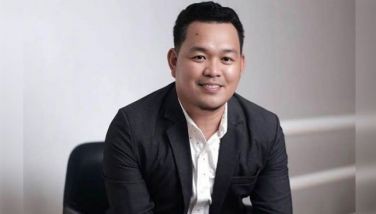The boardroom as classroom

We’ve been getting a lot of interest about The Boardroom Experience, our new initiative over at Go Negosyo. Basically, we invite to corporate boardrooms select senior high school students from public schools to participate in discussions on entrepreneurship, leadership and innovation. Through the activity – and with the support of the Department of Education – we hope to give them an enhanced understanding of entrepreneurship and leadership, enriching their learning experience through direct interaction with business leaders and actual exposure to real-world business practices.
It is an immersive learning experience for the students. How many Filipino kids get to see the inside of an actual boardroom and interact with the CEO? Hopefully, this exercise can prepare them for when they present their business ideas to seasoned businessmen, and give them the confidence to hold their own against the top CEOs of the country.
We want them to be exposed to what is out there after school and, in the process, help them figure out what they are good at. Is life in the corporate world something they can excel in? Are they better suited to become entrepreneurs? The world needs both, but we have to help these young minds arrive at the correct decision.
I have come to enjoy these mentoring sessions. The questions they ask give me some insight into what is on young people’s minds. For instance, during one The Boardroom Experience session we hosted at the RFM headquarters in Mandaluyong, one of the students asked me what RFM stands for and about the products and brands in the company.
I said RFM stands for Republic Flour Mills, which tells you right away that we started in the flour milling business. I also told them how we diversified to include several brands like sauces and pasta. I told them about Selecta and how we partnered with Unilever and created the leading ice cream brand in the market today. They listened intently about how joint ventures work, what is market share and what competition is like in the food and beverage market.
These students don’t remember a time when there were no smartphones and social media, so I told them how we used to market products using TV, radio and newspapers, and how we used supermarket sampling as a tool to promote brands and gather feedback.
Some of them asked about boardrooms. I told them that the moment you are in a boardroom of a company, that means you have succeeded, you have reached the highest level, you are the boss or are of some importance to the organization. You could be a key marketing executive, the CFO, a chief accountant, a production head, a senior manager, but you will be the kind of person the owner calls to become part of the decision-making.
I was asked if I had always wanted to be a businessman. I told them that what I really wanted was to be Batman. But then I told them how, having but a small allowance for school, I decided to sell my own clothes so I could save enough money to use as capital for my first business. My classmates never had a clue, but when they found out, they couldn’t believe that I would actually sell my clothes. Looking back, I guess I could say that I had an inclination toward entrepreneurship but just didn’t know it at the time.
They asked if “Nalugi na ba ako?” I recounted to them a thing called the Asian Financial Crisis and how RFM – along with other big companies in the region – was affected by something that began in Thailand. I told them it was kind of like the pandemic, which I thought would help them understand how financial markets are interconnected. They were introduced to concepts like debt restructuring as a way for companies with foreign-denominated debts to maneuver their way out of the crisis. And then I told them how the pandemic affected big and small businesses.
The lesson that question prompted was that, when you decide to go into business, there will be many challenges, some of which will shake you down. But that’s when you develop character, learn to solve problems, keep a cool head and resist panic. You begin to appreciate the advice of people who have gone through the worst, and that once you have a good plan, you should execute it.
“Hindi lahat ng entrepreneur ay nagiging successful,” I told the students. In fact, there are more stories of failure than of successes; it’s just that we never hear about the failures. Which is a pity because we could learn a lot from them.
“Ano dapat ugali ng entrepreneur?” You have to be an optimist. There are two ways of looking at a problem: either you see things as totally dark and hopeless, or as someone who would say, “OK, this is the problem but I believe I can solve it.” If I were to distill it to what you should do when you find your business in trouble, I would say, two things: one, pray; and two, think and work very hard on how to solve the problem.
They asked for life advice so I told them how important it is to find a mentor. I advised them to choose their barkadas well, and have a network of friends who give them a positive mindset. I told them to get their feet wet first by working in a company, and when they’ve learned enough, pursue their entrepreneurial dreams.
What we cannot teach, however, is having the passion to succeed. The drive has to come from the individual.
- Latest
- Trending






















